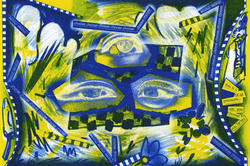Graphic Design sophomores get outside for an embodied lesson in type design.
Engaging in the Political
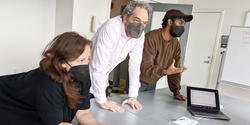
What is design’s role in politics and how can designers create or manipulate symbols to express a particular point of view? Students in Design and Politics, a multidisciplinary graduate studio taught by Graphic Design Professor John Caserta, are working together to explore these questions by dissecting the symbols and signs that surround us and discussing the nuances of their meaning.
“The course aims to build a community of students who want to make political work and engage in the political realm.”
“The course aims to build a community of students who want to make political work and engage in the political realm,” says Caserta. “We’re paying particular attention to how design overlaps with activism, technology, manufacturing systems, public engagement and speculative futures.”
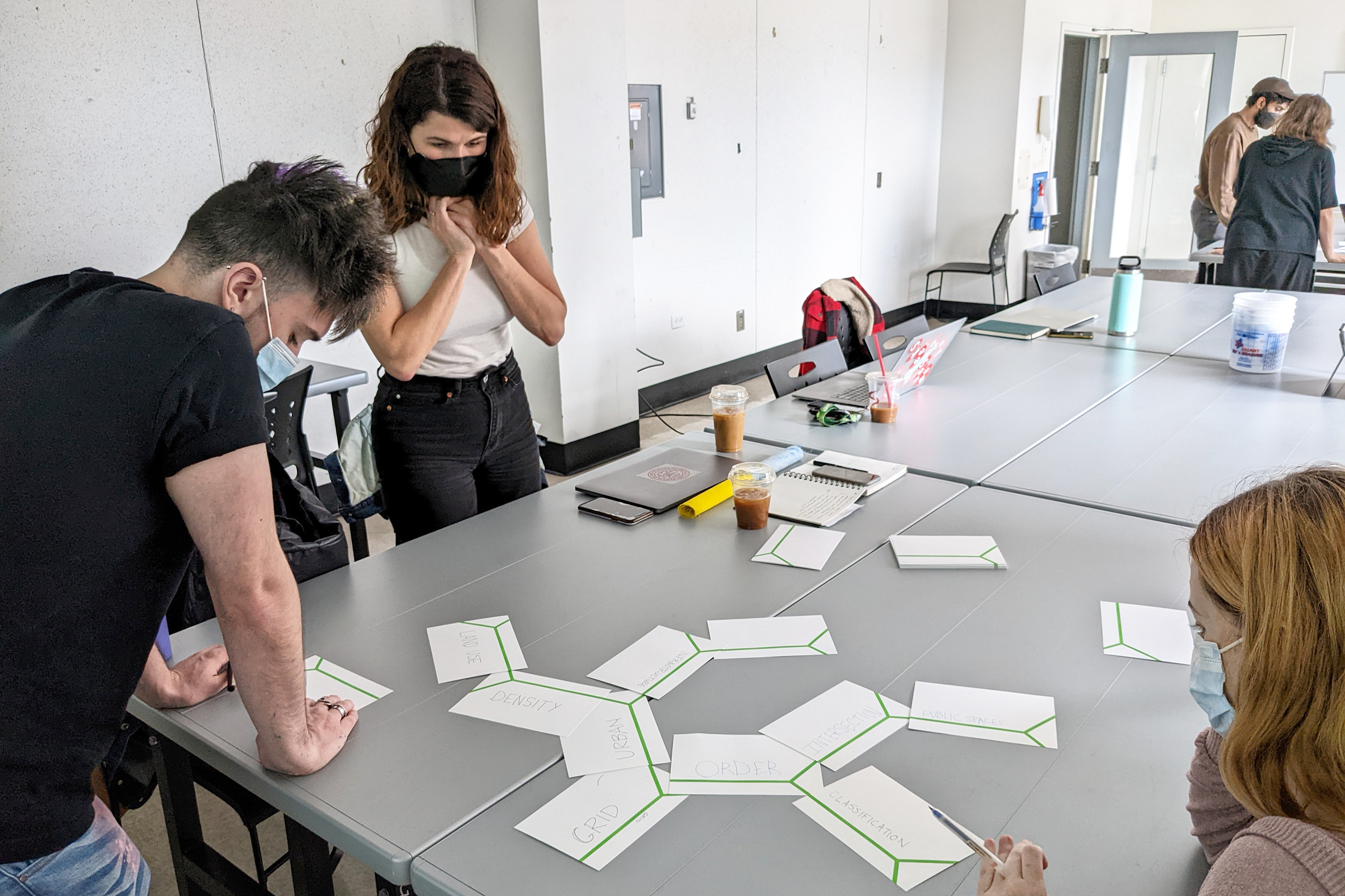
On a sunny Friday in March, the class broke into groups to experiment with late designer/philosopher Bruno Munari’s Drawing a Tree methodology, building a network of concepts connected by expanding branches. “Don’t be afraid to take risks,” Caserta advised the students. “The point of the exercise is to develop new ideas.”
For one group, the opening concept of tire led to both transportation and rubber. On the other side of the room, grid got students thinking about urban density, land use and classification systems.
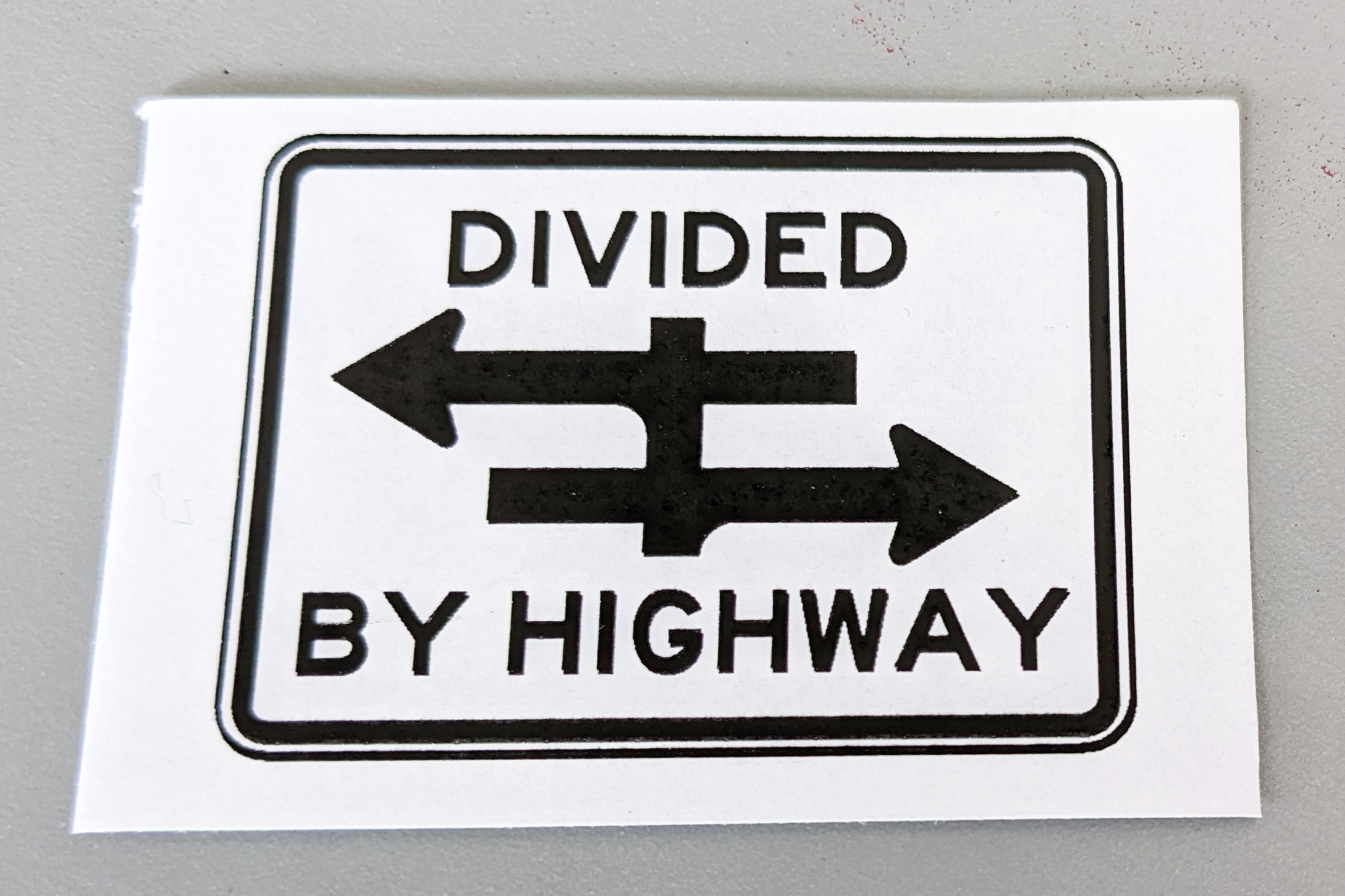
Each student is also playing with a specific sign or symbol, using their medium of choice to take the concept behind it in an unexpected direction. Graphic Design senior Avery Shaw 22 GD, for example, inserted the word by into the common traffic sign Divided Highway to create Divided by Highway, her subtle commentary on segregation and gentrification. “I’m playing with the idea of stenciling the sign in multiples on the sidewalk that crosses over the highway separating downtown from the West Side,” she says.
“Building the box by hand out of wood—a more permanent material—adds value to the object.”
Furniture Design grad student Lucia Steele MFA 24 FD is focusing on the basic cardboard box, millions of which are produced every year, used once to ship consumer goods and then broken down and recycled. “Nobody thinks about the box,” she says, “just its contents. Building the box by hand out of wood—a more permanent material—adds value to the object. I’m trying to start a conversation about value.”
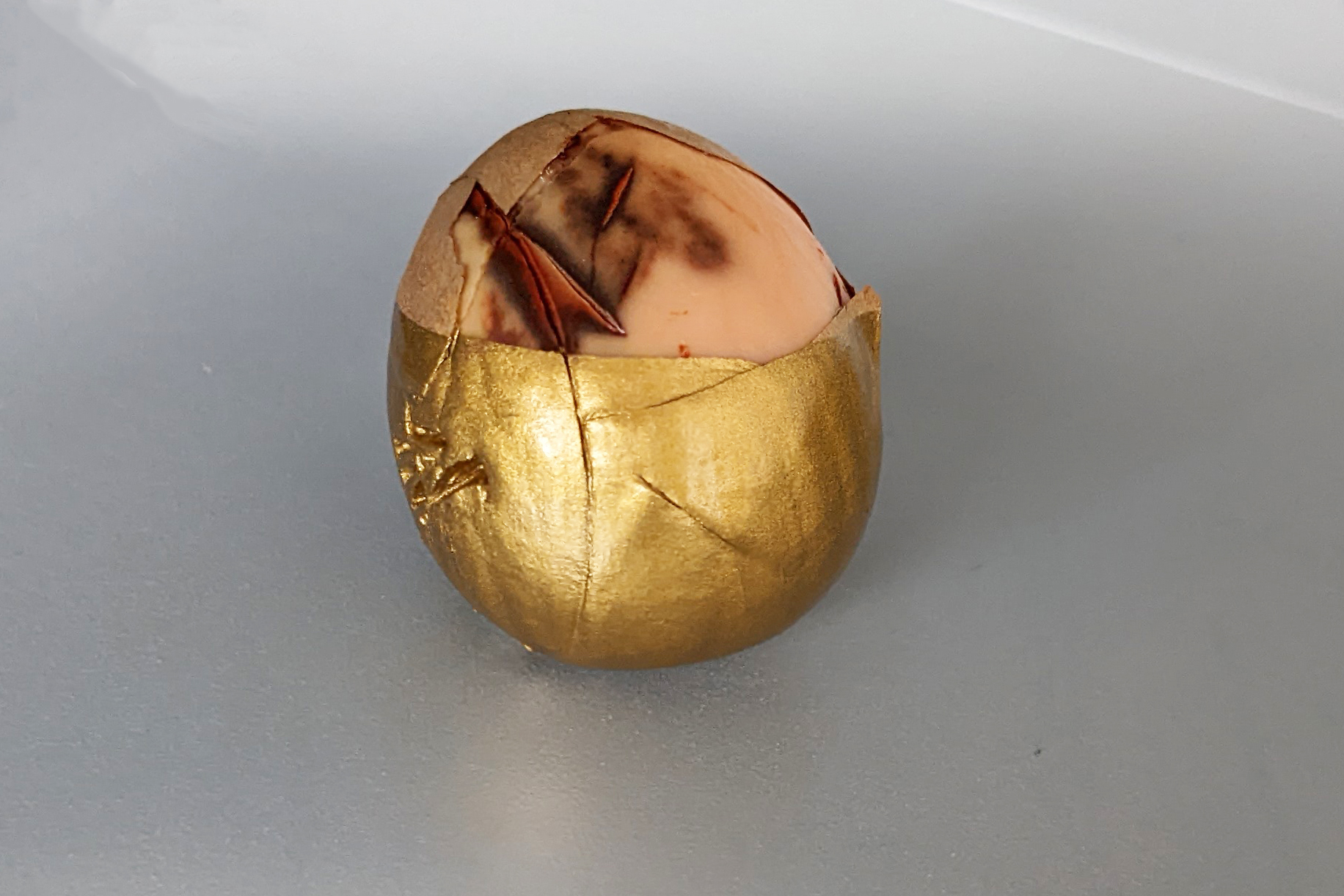
Grad students Dominique Tsironis MArch 22 and Rigo Flores MFA 23 PT are both investigating issues of agribusiness and migrant Mexican workers, but from very different angles. Tsironis is creating an editorial illustration featuring a spinning Mexican sombrero as a kind of carnival ride swirling farmworkers around and around from one side of the border to the other with the changing seasonal workflow.
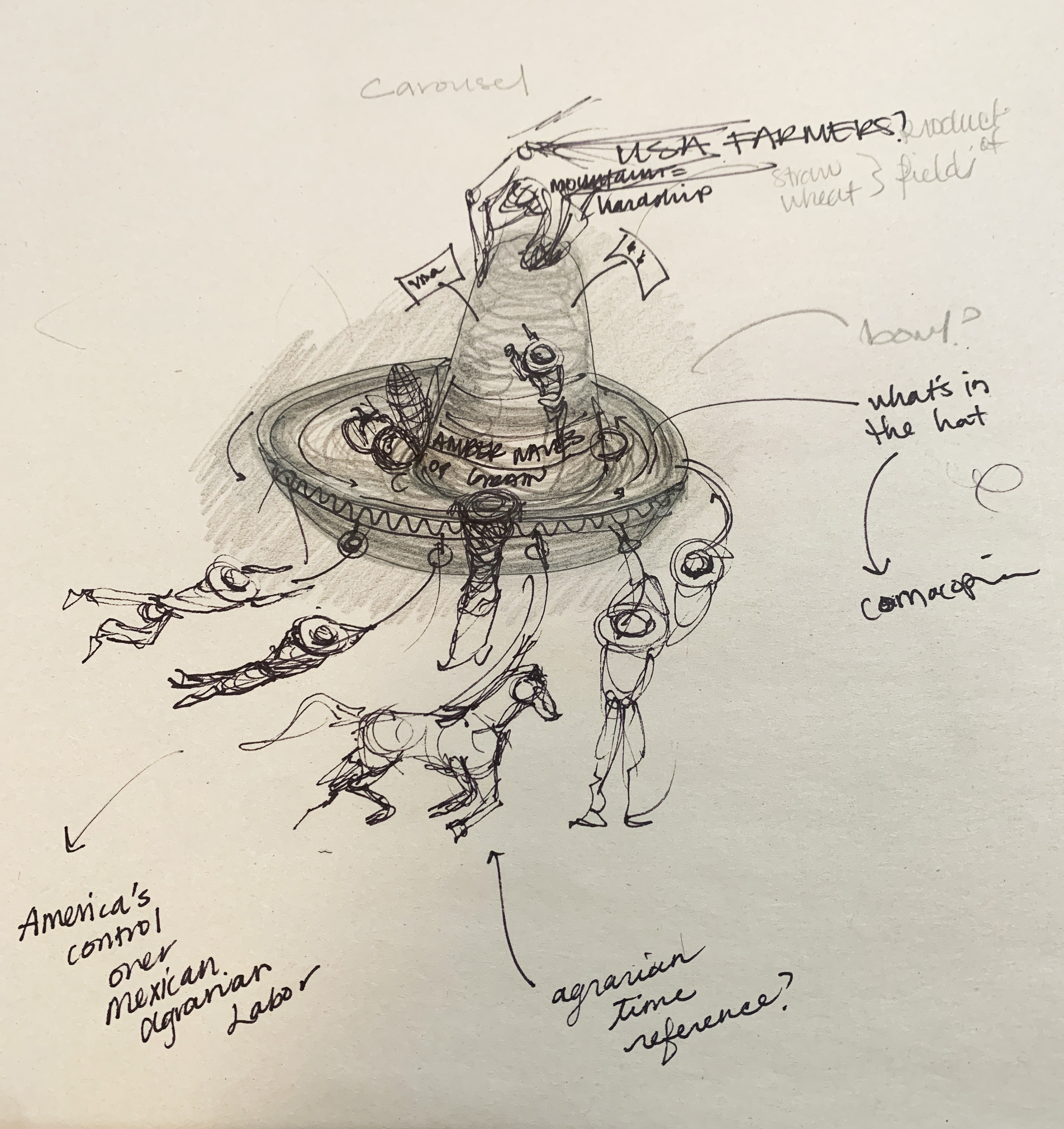
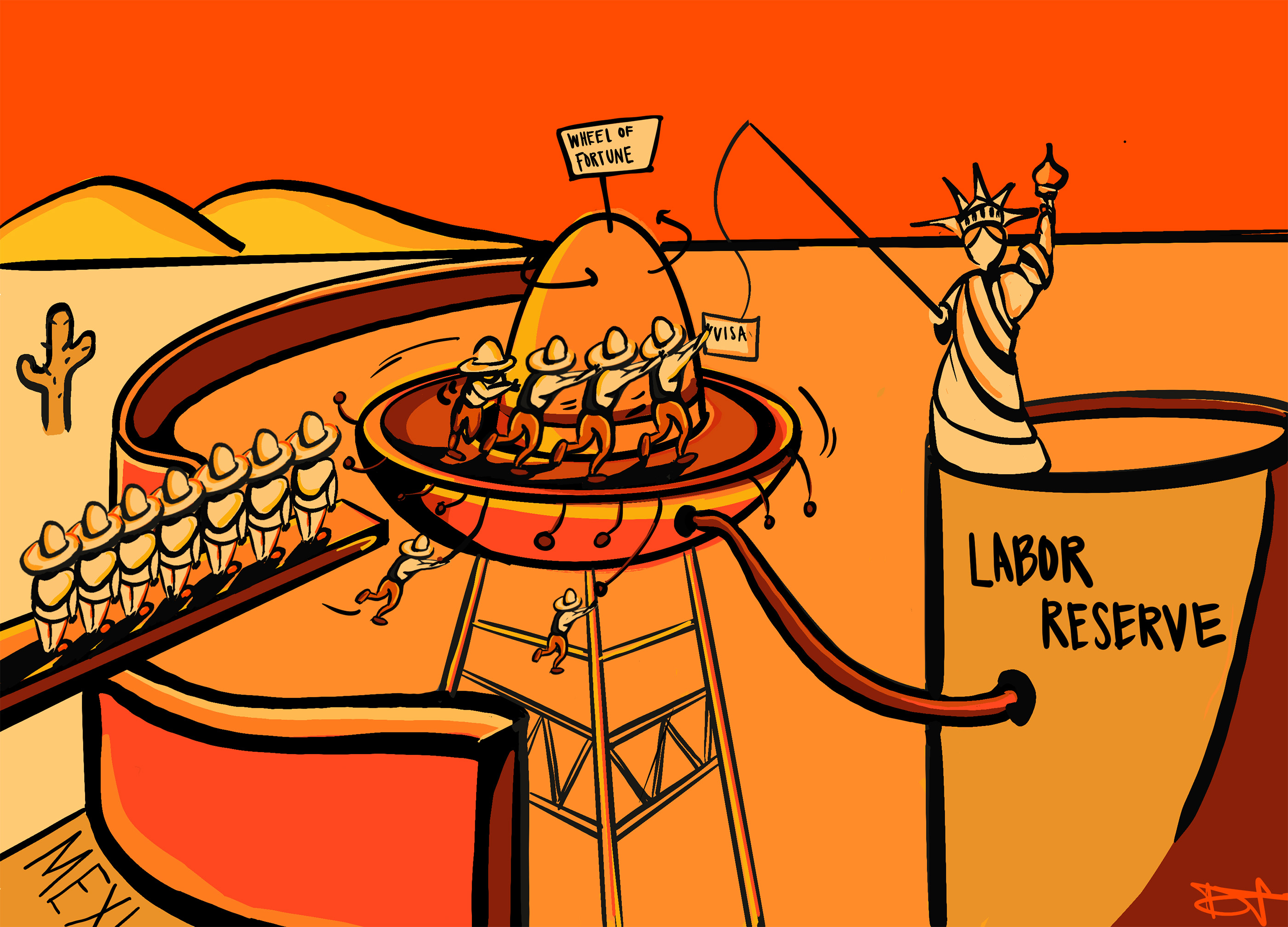
Flores is honing in on the catchphrase Hecho en Mexico (Made in Mexico) and specifically how the booming avocado industry is impacting the lives of Mexican farmers. The class passed around an avocado pit he’d carved the phrase into before dipping it in gold paint meant to symbolize prosperity. “The paint makes me think of colonization and the search for gold in Mexico in the 1500s,” Tsironis said.
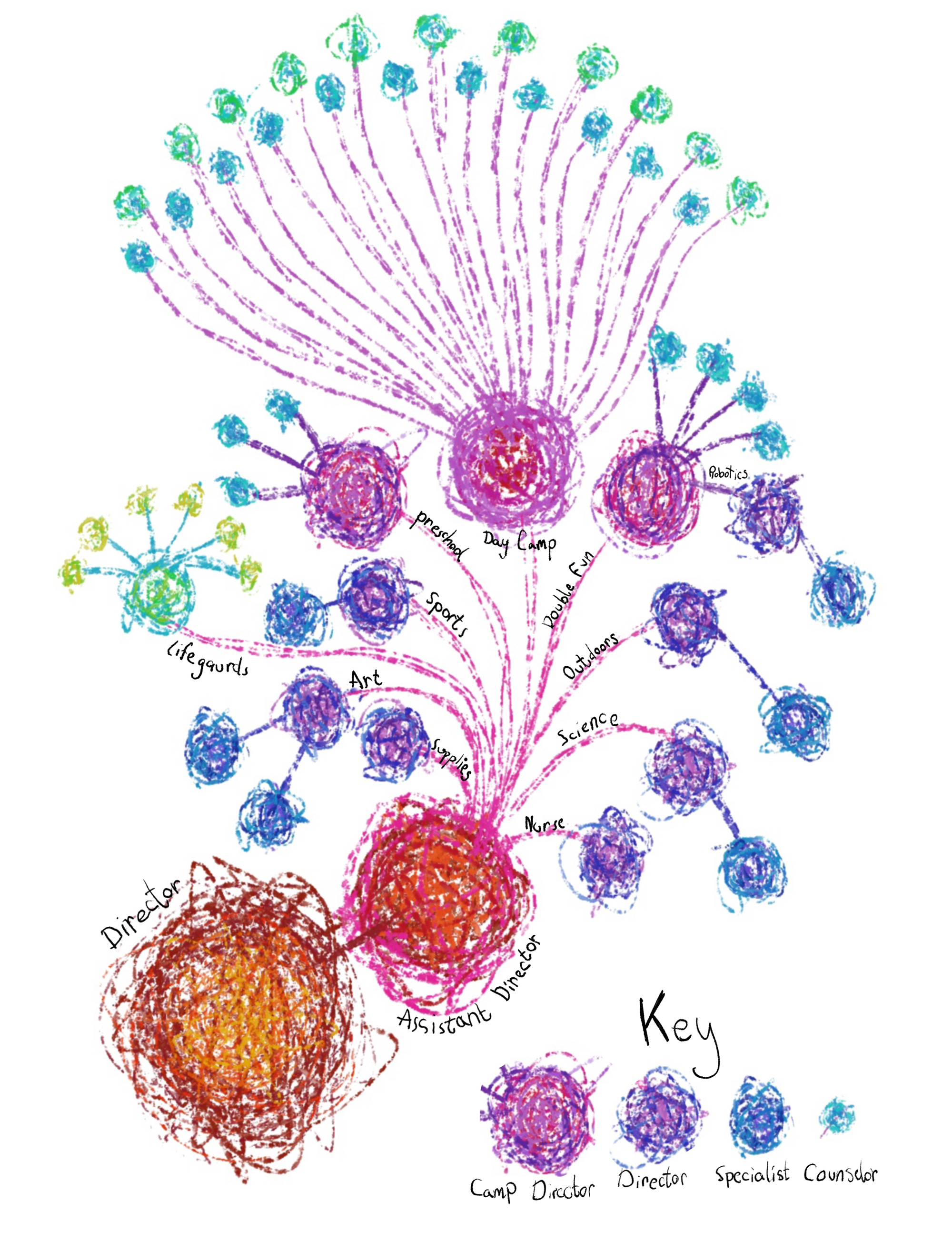
Others considered how the passing of time might enhance the piece. “It would be interesting if everything except the gold decayed over time,” Caserta noted. “What would that say about international relations?” Steele wondered if the seed would sprout over time. “That new life could represent the positive side of international trade,” she suggested.
—Simone Solondz
April 18, 2022


